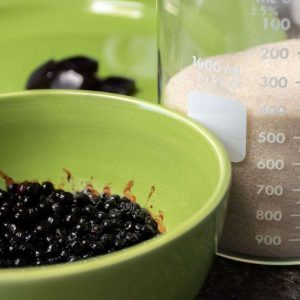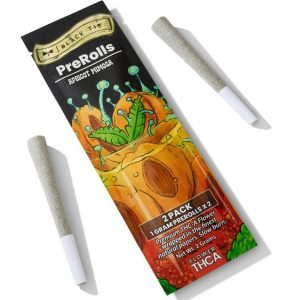What Are Microbes And How Do They Help Cannabis Nutrition?

Deep down within the soil there is a whole world of beneficial microbes that consists of bacteria and fungi that work in harmony to aid Cannabis nutrition. Under a microscope, microbes can clearly be seen operating within the soil and can be seen multiplying from millions to billions.
Just Like The Rain Forest
The enormous rain forest is a perfect example of how microbes work in a large scale community. Every root base of every tree and plant is connected by a web microbes that consists of beneficial bacteria and fungi. Trichoderma is the most commonly found fungus and is present in virtually every type of soil and can be of great help in Cannabis nutrition. Trichoderma is known to engage in a symbiotic relationship with plants which protects the plants from several diseases, but can also aid Cannabis nutrition. To guarantee Trichoderma is present in your cannabis plants soil, it can be bought from grow shops, garden centres and can even be found within some coco substrates.
What Do Beneficial Microbes Eat?
When it comes to food, microbes and Cannabis plants have a natural symbiotic relationship that can greatly benefit Cannabis nutrition. Beneficial microbes in the soil break down the available nutrients and thereby aid the uptake of nutrients by a Cannabis plant’s roots. This way substances are broken down (even toxic substances) into nutrients that can be absorbed more efficiently. Microbes rely on a form of humic acid for food, which can be found in many different substances including coal and oil. Molasses from sugar cane is a brilliant source of base feed for microbes because of its humic acid content.
Efficient Cannabis Nutrition And Bigger Yields With Beneficial Microbes
Yields are always increased when using beneficial soil microbes, which is why many growers use beneficial bacteria and funghi to aid Cannabis nutrition. The Cannabis plant has more different nutrients to feed on if you count the breakdown products from microbes. Microbes are also advanced helpers to get rid of waste products so the nutrient turnover rate is much higher than without soil microbes. When working with an organic compost tea, you inoculate your medium with billions of beneficial microbes that will ‘supercharge‘ it for the duration of the plants life cycle. As described in our blog post about medical Cannabis nutrition, these beneficial microbes will facilitate the uptake of macro- and micronutrients.
Aerobic Or Anaerobic?
There are two groups of microbes and they are defined based on whether or not they consume oxygen. We have all come across many different kinds of both of these types of microbes in our daily lives. Anaerobic microbes do not require oxygen for their metabolic process and are present in most oxygen-free environments, a good example would be the billions of anaerobic microbes in your body right now. Anaerobic microbes often produce terrible smells and are also responsible for the sulphur smell that can be found in many dirty grow rooms.
Many anaerobic microbes are classed as a non beneficial and can even be harmful to your plants, soggy wet soils can create unwanted anaerobic microbe groups. Most beneficial microbes that grow inside the root mass and help Cannabis nutrition are aerobic. These aerobic microbes are another reason to avoid over watering your Marijuana plants as they require oxygen for their metabolism. If the soil is flooded there will not be enough oxygen available, this anaerobic environment can rapidly wipe out your population of beneficial aerobic soil microbes.
Making Organic Compost Tea
A common way to add beneficial microbes to soil is through a compost tea. Compost tea is a liquid that can be made from compost which contains soil microbes. While the use of regular compost has similar benefits, compost tea is easier to apply and more concentrated. Adding soil microbes to aid your Cannabis plant this way will improve its metabolism and make it more resistant to diseases. An important part of preparing a compost tea is adding plenty of oxygen to multiply as much beneficial aerobic microbes as possible. Because Trichoderma, the most common symbiotic soil microbe, is readily available at garden centers and grow shops, it is very easy to make your own organic compost tea without using compost. These microbes also need a food source to multiply, this food source can vary greatly as long as it includes a carbohydrate source and enough minerals like potassium, calcium and magnesium. A very easy way to approach feeding microorganisms is by using molasses, which consists mostly of simple carbohydrates and contains most of these minerals. Molasses is a byproduct of sugar production and is generally used as a sweetener in baked goods, it is also cheap and can often be found in the baked goods isle in larger supermarkets.

What you will need to breed your own beneficial microbes and get all the the benefits of a freshly made organic compost tea is listed below:
- An air stone or a similar aquarium bubbler
- Air Pump
- An empty sterilized bucket
- Fresh water
- Microbes to add (Trichoderma)
- A food source (molasses)
MICROBES + FOOD SOURCE + WATER + OXYGEN = AEROBIC MICROBES

A concentrated microbe solution to improve Cannabis nutrition is very simple to make, all you are doing is replicating an oxygen rich underwater environment for the microbes to multiply. Connect the air stone or bubbler to the air pump and place it in the base of the water reservoir.
Add the microbe spores in powder form and watch as they dissolve into the bubbling water. Now you can add a food source for the microbes. Once they have a reliable carbon rich food source, they will start multiplying and be ready to attach to a host upon contact.
Now that the microbes and molasses are in the bubbling water, simply leave them in a dark place over a 24 hour period to obtain the highest possible microbial count. Once this process is complete, the microbial brew can be applied to your Cannabis plant by pouring it directly into the soil or other medium. Doing this just once can already go a long way in stimulating Cannabis nutrition and increasing your yield. More information about Cannabis nutrition read “What fertilizer do you use as a beginner?“.



